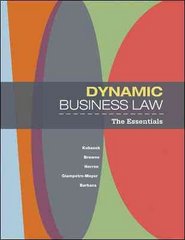Answered step by step
Verified Expert Solution
Question
1 Approved Answer
1. What assumptions cause the immediate-short-run aggregate supply curve to be horizontal? Why is the long-run aggregate supply curve vertical? Explain the shape of the
1. What assumptions cause the immediate-short-run aggregate supply curve to be horizontal? Why is the long-run aggregate supply curve vertical? Explain the shape of the short-run aggregate supply curve. Why is the short-run curve relatively flat to the left of the full-employment output and relatively steep to the right? 2. Why does a reduction in aggregate demand in the actual economy reduce real output, rather than the price level? Why might a full-strength multiplier apply to a decrease in aggregate demand? 3. Briefly state and evaluate the problem of time lags in enacting and applying fiscal policy. Explain the idea of a political business cycle. How might expectations of a near-term policy reversal weaken fiscal policy based on changes in tax rates? What is the crowding-out effect, and why might it be relevant to fiscal policy? In view of your answers, explain the following statement: "Although fiscal policy clearly is useful in combating the extremes of severe recession and demand-pull inflation, it is impossible to use fiscal policy to fine-tune the economy to the full-employment, noninflationary level of real GDP and keep the economy there indefinitely." 4. How do economists distinguish between the absolute and relative sizes of the public debt? Why is the distinction important? Distinguish between refinancing the debt and retiring the debt. How does an internally held public debt differ from an externally held public debt? Contrast the effects of retiring an internally held debt and retiring an externally held debt. 5. Explain and evaluate the following statements: a. The invention of money is one of the great achievements of humankind, for without it the enrichment that comes from broadening trade would have been impossible. b. Money is whatever society says it is. c. In the United States, the debts of government and commercial banks are used as money. d. People often say they would like to have more money, but what they usually mean is that they would like to have more goods and services. e. When the price of everything goes up, it is not because everything is worth more but because the currency is worth less. f. Any central bank can create money; the trick is to create enough, but not too much, of it. 6. How do each of the following relate to the financial crisis of 2007-2008: declines in real estate values, subprime mortgage loans, mortgage backed securities, AIG
Step by Step Solution
There are 3 Steps involved in it
Step: 1

Get Instant Access to Expert-Tailored Solutions
See step-by-step solutions with expert insights and AI powered tools for academic success
Step: 2

Step: 3

Ace Your Homework with AI
Get the answers you need in no time with our AI-driven, step-by-step assistance
Get Started


